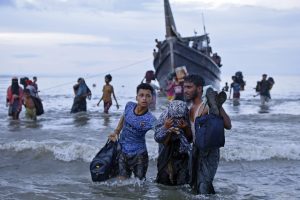In recent years Australia has started to shift its focus westward. While the Pacific Ocean and Southeast Asia have been deemed primary areas of interest for the country, the Indo-Pacific construct has led Australia to take its Indian Ocean opportunities more seriously. Mostly this has led to greater cooperation with India as the region’s primary power, but Canberra shouldn’t discount other states within South Asia, each of which has its own worth and opportunities to present.
As we move toward an era where economic weight is more closely aligned to a country’s population, Bangladesh has the potential to become a serious power. Given the size of its enormous neighbor, Bangladesh is often overlooked as a considerable country itself. Yet it has the world’s eighth largest population, with around 170 million people.
Alongside its large population, Bangladesh has experienced a sustained period of economic growth and considerable poverty reduction, mostly off the back of its textiles industry. Its GDP per capita has overtaken India, and the country will soon graduate out of least developed country status. As this progress continues, the relationship between Canberra and Dhaka has the potential to flourish.
Yet with opportunities also comes responsibilities. Bangladesh is currently carrying an extraordinary burden by housing the world’s largest refugee camp in Cox’s Bazar. The Australia’s government has recognized this and has committed $153 million from 2023 to 2025 to meet the needs of the Rohingya refugees in Bangladesh, as well as for humanitarian support to Myanmar. This funding is designed to provide food, water, shelter, education, and health services.
This is a welcome contribution, but what both Bangladesh and the Rohingya themselves require is resettlement. It is highly unlikely that the Rohingya will be able to return to Rakhine state in Myanmar. However, the prospect of significant resettlement of Rohingya – by all countries capable of refugee resettlement, not just Australia – looks dire. Since 2008, Australia has granted refugee visas to less than 500 Rohingya. There is a fairly brutal reason for this.
Although governments may not admit it, there is a cost-benefit analysis to refugee resettlement. The calculation is one of how much the state needs to outlay to convert a refugee into a taxpayer. In 2015, when Australia took an additional 12,000 Syrian refugees (above its normal annual intake), it did so knowing that this conversion would be relatively easy. Most Syrian refugees had good levels of education, and many were highly skilled. There were strong social networks already in place through well-established community groups, mosques, and churches. Although English is taught in Syrian schools, accessing services in Australia in Arabic was also already quite easy.
The Rohingya have none of these advantages. The refugee to taxpayer pipeline is far more difficult, and therefore resettlement is not considered a feasible option by Canberra. Yet while such cost-benefit analyses are the nature of how states think, there are wider considerations to be made. Australia’s security concerns are intimately tied to maritime refugee flows through the Indo-Pacific, making the Cox’s Bazar camp a potential source of regional insecurity.
Last week a boat carrying Rohingya refugees capsized off the coast of Indonesia, with dozens drowning. Last year, 2023, was the deadliest year at sea for Rohingya asylum seekers, with 569 deaths among those attempting to make maritime crossings. There are clearly a number of Rohingya who are desperate to find new solutions to their current predicaments.
Australia has been adamant that asylum seekers arriving by sea will never be resettled in Australia. Both major political parties believe it is politically unfeasible for boats carrying asylum seekers to appear near Australia’s shores. Yet this cannot be solely deemed a political problem; it has to be one that has a solution. In order to prevent these dangerous journeys, the Rohingya need to have hope of resettlement through formal processes.
Building a fruitful and productive relationship with Bangladesh means taking this refugee crisis seriously. By no means is Australia capable of creating solutions by itself, but it does have the capacity to take more Rohingya than it currently does, and use its diplomatic weight to convince other states to do likewise. It also means investing in the resources necessary to make the refugee to taxpayer pipeline easier. This includes expanding the current pilot program for civil society sponsorship of refugees, which provides immediate community links and networks to draw upon.
The status quo is unsustainable for both the Rohingya and Bangladesh. Aside from its global responsibilities to seek solutions to this crisis, there is a lot of goodwill that can be earned for Canberra in Dhaka by doing so, which will undoubtedly pay dividends in future decades.

































